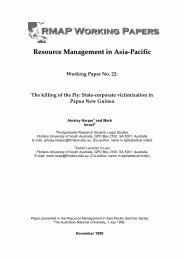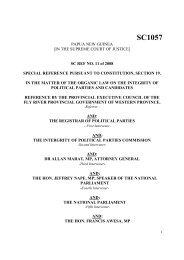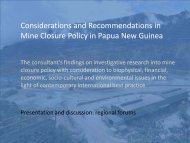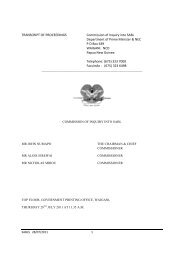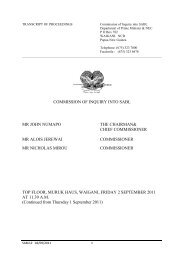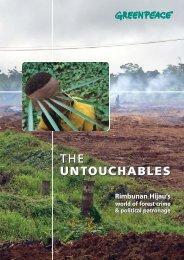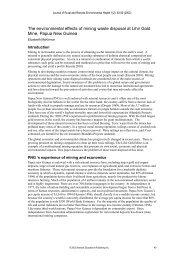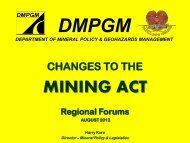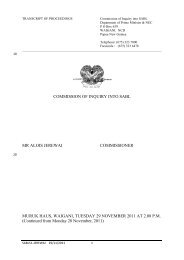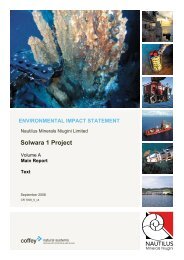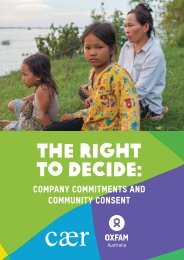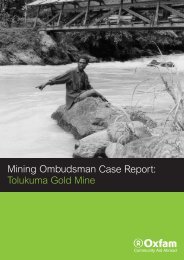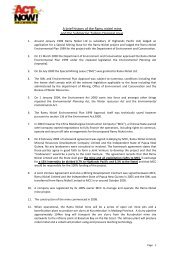Fishy business. The Social Impact of SST.pdf - Act Now!
Fishy business. The Social Impact of SST.pdf - Act Now!
Fishy business. The Social Impact of SST.pdf - Act Now!
Create successful ePaper yourself
Turn your PDF publications into a flip-book with our unique Google optimized e-Paper software.
During the 1950’s over 860,000 coconut palms were planted in the Sepik District, ultimatelyyielding, for example, 430 tonnes <strong>of</strong> copra for the first six months <strong>of</strong> 1960. 77.5 tons <strong>of</strong> peanutswere exported from the Sepik District in 1961 and 125 tons <strong>of</strong> rice were produced in the Maprik,Drekikir and Angoram areas and bought by the Administration. More settlements emerged in the1960’s as people from Vokeo and Koil settled at Kreer market, and others moved into the end <strong>of</strong>Boram airport.Gold production in the Maprik and Lumi areas was steady but not significant. C<strong>of</strong>fe, though,w asthe big new crop. At the beginning <strong>of</strong> the 1960s 101,000 plants were maturing and another 84,000c<strong>of</strong>fee plants were being prepared in nurseries. <strong>The</strong> Sepik Producers Co-operative Association(SPCA) was created in 1965 for c<strong>of</strong>fee growers. Cocoa was also on the rise—first at Moem, andthen (by Pita Simogun) at Dagua..By the beginning <strong>of</strong> the 1970s there were nineteen co-operativesocieties within the Sepik District. One such cooperative was the Kreer Carvers workshop andshowroom, but the Kreer Service Station (aka Caltex) and the Wirui Service Station were alsolocally owned <strong>business</strong>es.To assist with the starting <strong>of</strong> locally run concerns the Business Advisory Office was set up inWewak. By June 1971 it had 364 clients, twenty <strong>of</strong> whom had an annual turnover <strong>of</strong> onehundred and sicty thousand pounds. <strong>The</strong> Development Bank also gave financial assistance,having handled many indigenous commercial or rural loans ranging from $200 to $3000. <strong>The</strong>1960s was a period <strong>of</strong> substantial expansion for Wewak, both physically and in terms <strong>of</strong>economic possibilities. It was a decade when the enterprising indigenous man could begin tobe as successful in <strong>business</strong> as his expatriate counterpart .(Ibid:62-63).Somare returned to Wewak in 1964 to work for Radio Wewak as a reporter; he also becamepresident <strong>of</strong> the Public Service Association, supporting the Public Service Single SalaryStructure. Afterwards, he helped form the Pangu Pati, then ran for and won the East SepikRegional seat in 1968 (after Pita Lus campaigned for him by motorbike). <strong>The</strong> rest is history.32



